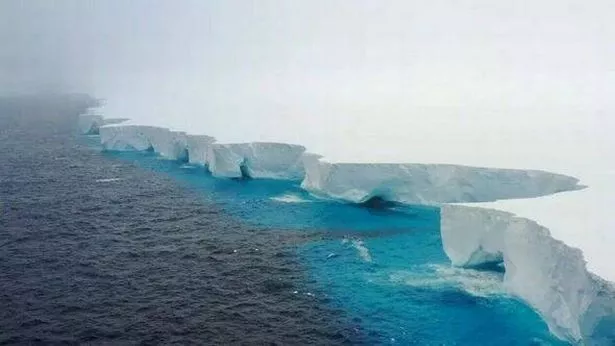World’s Largest Iceberg A23A on the Move: Heading Toward South Georgia, Scientists Warn of Ecological Threat
Kazi Abul Monsur#
The world’s largest and one of the oldest icebergs, “A23A”, is now rapidly disintegrating as it floats through the Southern Ocean, raising serious concerns among scientists about its environmental impact.
A Giant of Ice — Born in 1986
A23A originally calved from the Filchner Ice Shelf in Antarctica back in 1986. For nearly 37 years, it remained grounded in the Weddell Sea, stuck to the seabed. But in December 2023, ocean currents (possibly influenced by a marine eddy or cyclone) finally freed the massive iceberg, setting it on a slow journey northward.
According to Wikipedia, A23A originally spanned an area of approximately 3,900 square kilometers (1,500 square miles). Even after decades of gradual melting, the iceberg still covers an estimated 3,234 square kilometers — larger than Luxembourg (2,586 sq. km) and nearly the size of the U.S. state of Rhode Island.
Heading Toward South Georgia Island
Recent satellite data and observations confirm that A23A is now drifting toward South Georgia Island, a British Overseas Territory in the South Atlantic Ocean. This remote, mountainous island is a biodiversity hotspot, home to large populations of penguins, seals, and seabirds, many of which breed and feed in the surrounding nutrient-rich waters.
Environmental scientists are deeply concerned. If A23A collides with or becomes grounded near the island, it could significantly disrupt the fragile marine ecosystem. The iceberg could block feeding routes, limit access to breeding grounds, or even damage underwater habitats essential for marine life.
Not a Sea Level Threat — But a Biodiversity One
Though A23A is already afloat and will not contribute to sea level rise as it melts, the scale and location of its potential disintegration pose navigational hazards and ecological threats. If it breaks into smaller fragments near South Georgia, shipping routes could be affected as well.
Climate Change & Iceberg Calving
Scientists believe that A23A’s initial calving in 1986 was likely part of a natural ice shelf cycle, not directly caused by global warming. However, they also caution that climate change is rapidly accelerating ice loss across Antarctica, leading to increased frequency and intensity of iceberg calving events.
Rising ocean temperatures are melting Antarctic ice shelves from below, weakening their structure. While A23A’s current movement is natural, researchers warn that in the near future, such events may become more dangerous and unpredictable.
Monitored Closely by Scientists
A23A is now under intense satellite surveillance by environmental researchers, including scientists from organizations like the British Antarctic Survey and NASA. By tracking its trajectory and rate of melting, they hope to predict any potential impact and prepare for environmental management in the South Atlantic.
A Wake-Up Call for the Planet
The saga of iceberg A23A is a stark reminder of how delicate Earth’s polar ecosystems are — and how quickly they are changing. Though A23A itself may not be the direct result of human-driven climate change, it floats in an ocean increasingly shaped by it.
The world must now watch closely as this colossal iceberg moves silently across the sea, carrying with it the weight of nature’s warning.##



মন্তব্যসমূহ বন্ধ করা হয়.